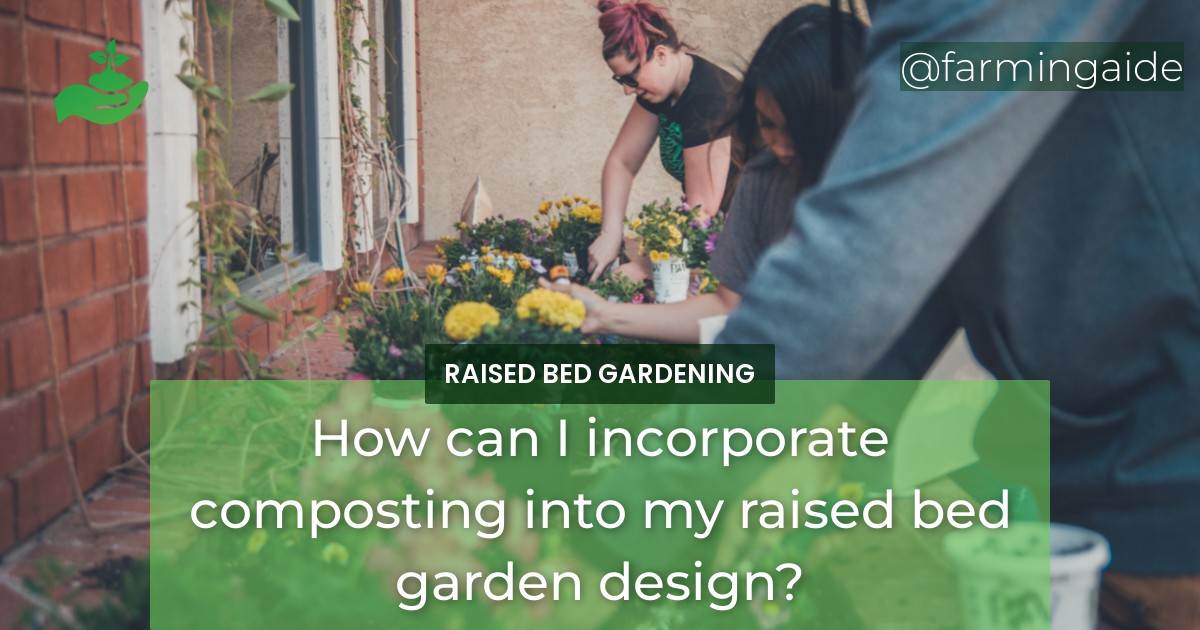Composting in raised bed gardening is a great way to nourish your plants and help them grow to their fullest potential. Incorporating compost into your raised bed garden design can seem daunting, but with the right techniques and equipment, it can be done easily and efficiently. In this article, we will cover everything you need to know about composting in raised bed gardening, including the benefits of composting, types of composting bins, what to compost, composting techniques, and how to incorporate compost into your raised bed garden design.
Utilizing Compost Bins and Composting Techniques for Raised Bed Gardening
Benefits of Composting in Raised Bed Gardening
- Improves soil quality and structure
- Increases nutrient content in soil
- Reduces the need for chemical fertilizers
- Encourages healthy soil microorganisms
- Reduces the amount of waste going to landfills
Composting in raised bed gardening is a sustainable and eco-friendly practice that benefits both your garden and the environment.
Types of Composting Bins for Raised Bed Gardening
There are several types of composting bins that are suitable for raised bed gardening. Here are some of the most common:
- Wire Mesh Bins: These are simple and cost-effective composting bins made from wire mesh. They are easy to assemble and can be moved around your garden as needed.
- Tumbling Composters: These are enclosed bins that can be rotated to mix the compost. They are great for small gardens and produce compost quickly.
- Wooden Bins: These are durable and attractive composting bins that can be customized to fit your garden’s design.
- Plastic Bins: These are lightweight and easy to assemble composting bins that come in a variety of sizes and shapes.
Choosing the Right Location for Your Composting Bin
When choosing a location for your composting bin, consider the following:
- Proximity to your raised beds for easy access
- Shaded area to prevent the compost from drying out
- Avoid locating it near water sources to prevent contamination
- Keep it away from areas with strong odors or where it might attract pests
What to Compost in Your Raised Bed Garden
Greens and Browns
The key to successful composting is to balance “greens” and “browns” in your compost bin. Greens are rich in nitrogen and include things like vegetable scraps, grass clippings, and coffee grounds. Browns are rich in carbon and include things like dry leaves, straw, and shredded paper. Aim for a ratio of 2:1 browns to greens.
Avoid These Items
Avoid composting meat, dairy products, and oils as they can attract pests and create odors. Also, avoid composting plants that are diseased or have been treated with pesticides.
Composting Techniques for Raised Bed Gardening
There are several composting techniques that you can use in your raised bed gardening:
Hot Composting
Hot composting is a quick and efficient way to produce compost. The ideal temperature for hot composting is between 130-160°F. To achieve this, you need to turn the compost frequently and maintain a proper balance of greens and browns.
Cold Composting
Cold composting is a slower process that does not require frequent turning. It is best suited for gardeners who do not have a lot of time to devote to composting.
Vermicomposting
Vermicomposting is the process of using worms to break down organic matter into compost. It is an excellent choice for gardeners who want to compost indoors or who do not have a lot of space.
Incorporating Compost into Your Raised Bed Garden Design
When to Add Compost
The best time to add compost to your raised bed garden is in the spring or fall. This will give the compost time to break down and integrate into the soil before planting.
How Much Compost to Add
A general rule of thumb is to add 3-4 inches of compost to your raised bed garden each year. This will help maintain a healthy balance of nutrients in the soil.
How to Apply Compost
Spread the compost evenly over the raised bed garden and mix it into the top few inches of soil. Water the bed thoroughly after adding the compost.
Maintaining Your Compost in Raised Bed Gardening
Turn your compost pile every 1-2 weeks to ensure even decomposition. Keep the compost moist but not too wet and add more greens and browns as needed to maintain a proper balance.
Conclusion
Composting in raised bed gardening is a great way to improve soil quality and reduce waste. By choosing the right composting bin, location, and techniques, you can easily incorporate compost into your raised bed garden design. Remember to follow the proper balance of greens and browns, avoid certain items, and maintain your compost regularly for best results.


